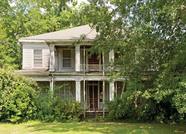 Click image to enlarge.
Click image to enlarge.
Carrollton Male and Female Academy, Carrollton, Pickens County, c.1850 (Places in Peril 2013)10/21/2013  Click image to enlarge. Click image to enlarge. Private academies were among the earliest institutions of learning in Alabama. By the mid-nineteenth century, they could be found in large and small communities across the state. Pickens County alone boasted eleven private academies by 1855, including the Carrollton Male and Female Academy. Today it stands as one of only fifteen known antebellum school buildings left in the state.
1 Comment
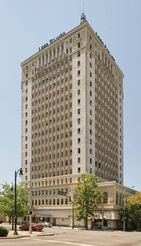 Click image to enlarge. Click image to enlarge. The Thomas Jefferson Hotel dominates the western skyline of Alabama’s largest city. Known as the “Pride of Birmingham” during its heyday and rising nineteen floors above the ground, this Renaissance Revival building opened a month before the 1929 stock market crash. It has been vacant since 1983, when local health officials declared the old hotel uninhabitable. Thirty years of neglect have taken a toll on the building. Unfortunately, attempts to revitalize it have not yet been successful. 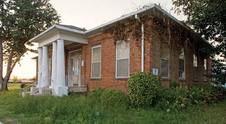 Click image to enlarge. Click image to enlarge. The Chappell House, built around 1850, is an outstanding example of purposeful adaptive use. Recognizing its historical significance, the Montgomery Housing Authority restored the city’s only surviving brick Greek Revival–style cottage in the 1930s. For nearly seventy years it served as business offices for the surrounding Riverside Heights housing project. With the housing project now gone, the vacant Chappell House faces an uncertain future. 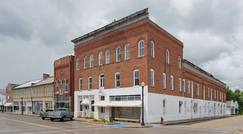 Click image to enlarge. Click image to enlarge. Once an elegant downtown hotel, the Greensboro Hotel remains a local landmark with great potential for revival. The hotel began as a two-story building adorned with “Flemish bond” brick, an ornamental pattern of bricks in which each row consists of alternate headers and stretchers. This type of brickwork may indicate an early construction date—possibly sometime close to the 1830s. Around 1890 G. W. Duggar added a third story. Jeffries Blunt, a banker who also built the Greensboro Opera House, may have added the cast iron balconies after he “greatly improved” the hotel around 1906. During the early 1960s, Turpin Vise acquired the building and converted it into a sewing plant. Th e ground floor also housed a cafe and a ladies’ clothing store. Although the hotel guests and balconies are gone, the old Greensboro Hotel is ready for a new owner and a new lease on life. Redevelopment options could include housing, offices, restaurant, or retail space. 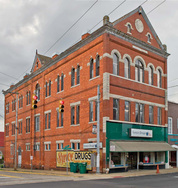 Click image to enlarge. Click image to enlarge. The Masonic Building has been a landmark in downtown Troy since the early 1890s. Still displaying a round stone plaque with the Masonic logo of the square and compass, the three-story brick building is a rare surviving late nineteenth-century Masonic lodge in Alabama. It is also a good example of Romanesque Revival commercial architecture, with round arch windows characteristic of the style. Masonic halls were once common to most American downtowns, but today many have been lost or abandoned in favor of newer meeting quarters. |
Alabama's Endangered Historic LandmarksEach year since 1994, Alabama Heritage has highlighted threatened historic sites throughout Alabama. The “Places in Peril” list has identified more than 215 imperiled historic resources throughout the state, and is compiled by the Alabama Historical Commission and the Alabama Trust for Historic Preservation. The locations highlight the results of deferred maintenance, perceived obsolescence, development pressures, and lack of funding—forces that now more than ever threaten our cultural legacy. But awareness is a powerful force, too, and can cultivate a renewed determination to be responsible stewards of our heritage. For more information, visit the AHC or the ATHP websites. Alabama Heritage is proud to bring to you a selection of the places designated as perilous. Please keep your comments to information relevant to the featured place in peril. Alabama Heritage reserves the right to delete any comment that we deem inappropriate. Archives
May 2024
|
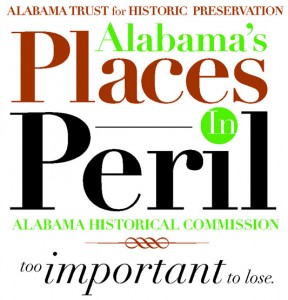
 RSS Feed
RSS Feed